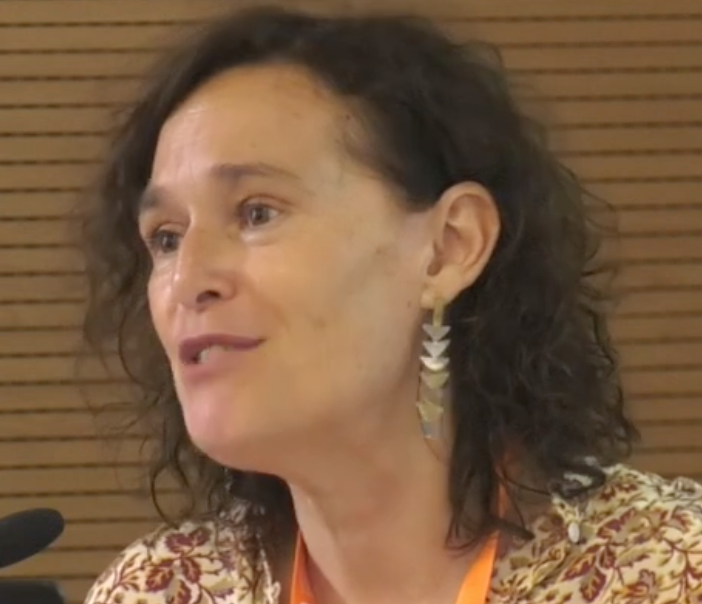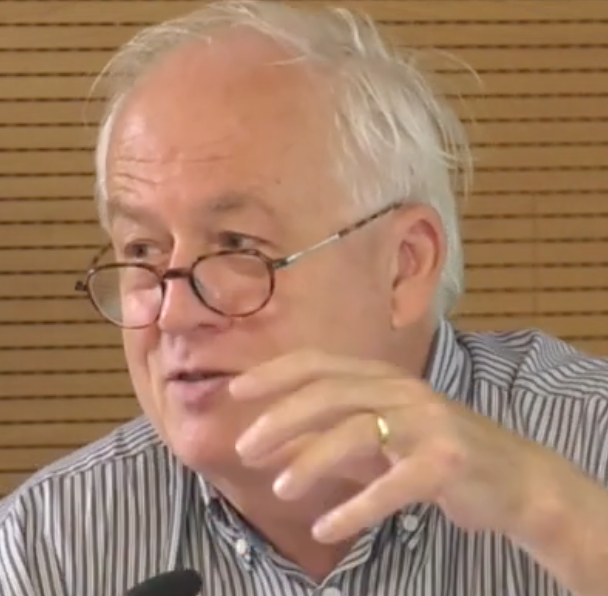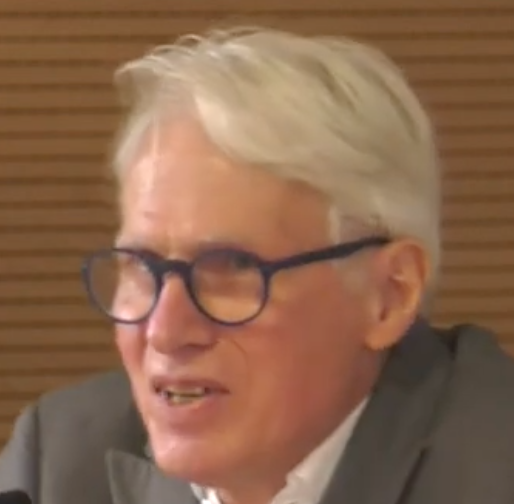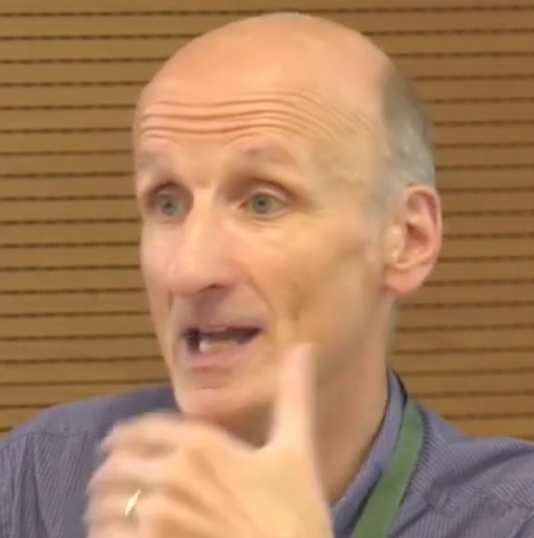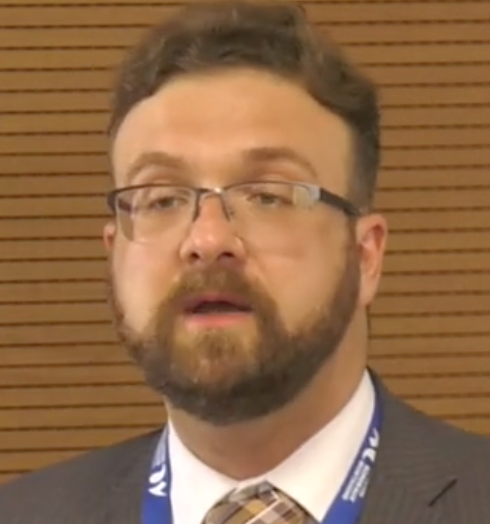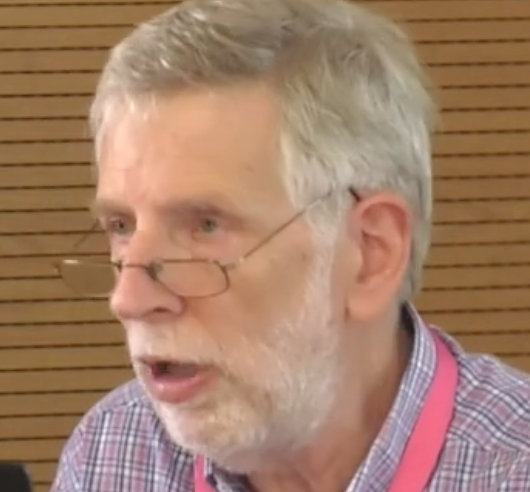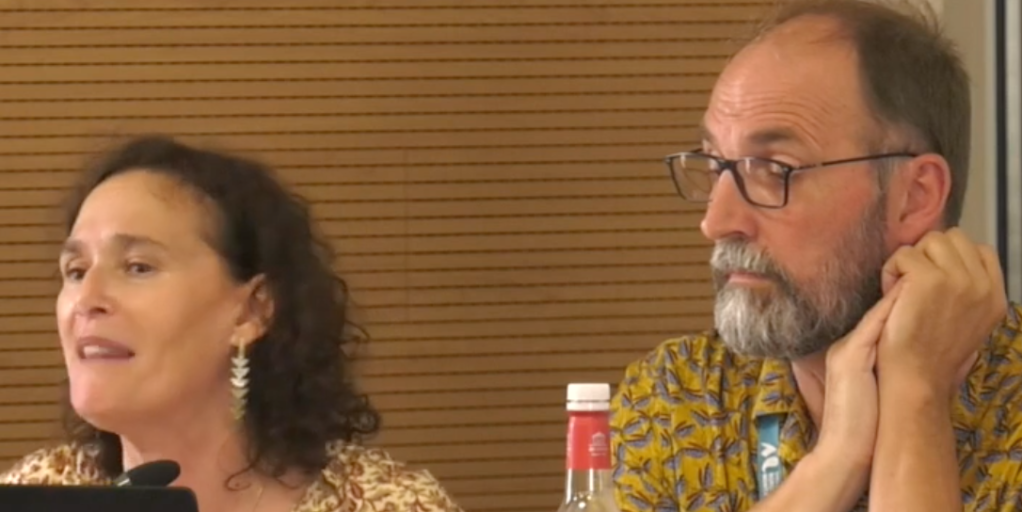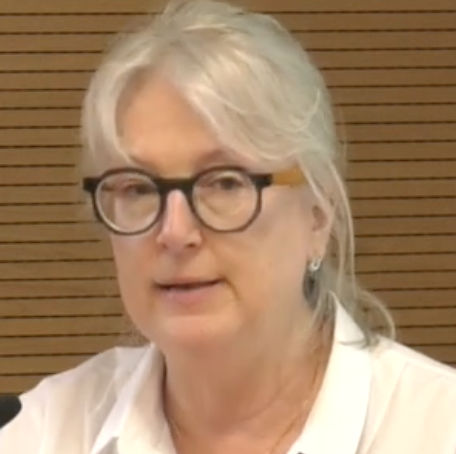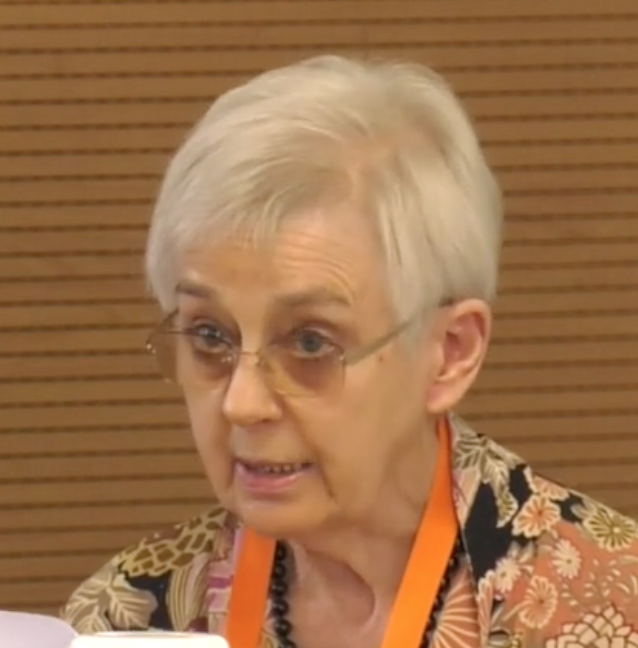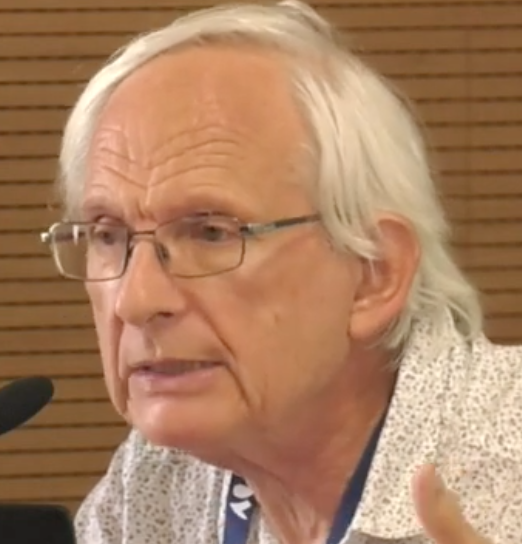Archive for the ‘Lesley Graham’ Category
An unpublished letter from Stevenson to Violet Paget (Vernon Lee), 1885

This post is contributed by Lesley Graham, presently working on Uncollected Essays 1880–1894 for the Edition.
Earlier this year a manuscript letter by Robert Louis Stevenson was found by Petersfield Bookshop between the pages of a volume of Robert Louis Stevenson’s Letters to his Family and Friends (ed. Sydney Colvin). The bookshop posted photographs of the two-page letter to their Twitter account (23 July 2019). The letter does not appear in the eight-volume Letters of Robert Louis Stevenson (Yale Univ. Press, 1994-5) and is transcribed below for the first time.
Violet Paget (1856–1935) wrote under the pseudonym Vernon Lee. She was an essayist, travel writer, critic and author of supernatural and short fiction with a scholarly interest in eighteenth-century Italy. When this letter was written in 1885, having lived in various parts of Europe, she was dividing her time between her family home in Florence and extended visits to England. She and Stevenson shared many friends and acquaintances — Henry James, J. A. Symonds, Horatio Brown, John Singer Sargent, Anne Jenkin etc. — but they do not appear ever to have met in person. Two letters from Paget to Stevenson are held in the Beinecke Rare Book and Manuscript Library, Yale University, but have never been published in full (Yale, GEN MSS 664 box 17 folder 453; B 5363-5364). The earlier of these is dated 6th August 1885 and written on stationery marked 5 via Garibaldi, Florence. It is Paget’s first contact with Stevenson and clearly prompted the reply published here. The second is dated August 10, 1886. Stevenson’s unfinished reply to this later letter appears in The Letters of Robert Louis Stevenson (vol. 5, p. 306).
Stevenson’s letter touches on three topics: a discussion of the necessary permissions for the translation of two of his works into Italian; acknowledgment of receipt of a work by Vernon Lee, and most interestingly a sympathetic discussion of the character of Prince Charles Edward Stuart and what Stevenson sees as Vernon Lee’s unflattering and one-sided treatment of him as a repulsive drunk in her account of the life of his wife (Princess Louise Maximilienne Caroline Emmanuele of Stolberg-Gedern, 1752–1824) in The Countess of Albany (London: W. H. Allen, 1884). Stevenson mentioned the prince in Kidnapped the following year, 1886:
‘the Prince was a gracious, spirited boy, like the son of a race of polite kings, but not so wise as Solomon. I gathered, too, that while he was in the Cage, he was often drunk; so the fault that has since, by all accounts, made such a wreck of him, had even then begun to show itself. (R. L. Stevenson, Kidnapped (London: Penguin, 1996), p. 162)
He was also to write about the Prince several years later in the novel fragment The Young Chevalier (1892), which paints a brief but psychologically nuanced portrayal of
a boy at odds with life, a boy with a spark of the heroic, which he was now burning out and drowning down in futile reverie and solitary excess (in Weir of Hermiston and other fragments, the Edinburgh Edition, vol. 26 (Edinburgh: Constable, 1897), pp. 82–3)
— a portrait in line with the plea for indulgence expressed in this letter. (For more on Stevenson’s treatment of the Young Pretender, see Lesley Graham, “Robert Louis Stevenson’s ‘The Young Chevalier’: Unimagined Space”, in Macinnes, German & Graham (eds), Living with Jacobitism, 1690-1788: The Three Kingdoms and Beyond (London : Pickering & Chatto, 2014), pp. 63–83.)
The bottom right hand corner of the first page of the letter is torn and the ends of four lines are consequently missing. In each case, our best guess as to the missing words or letters has been inserted between square brackets with a question mark.
Skerryvore
Bournemouth
Oct 14. 1885Dear Madam,
I shall attend to the affair of Signora Santarelli [1] with my best diligence, which is a relative diligence. It is right, however, that I should explain to you how I stand. If the permission be granted in the case of the first series it will be of the grace of Messrs Chatto & Windus; and if in the case of the second, [2] Signora Santarelli will have to divide her thanks between the authors and Messrs Longman. So far as the authors are concerned, it is already done; neither my wife nor I would dream of denying any invalid what may possibly prove to be an entertainment: we have both unfortunately too much reason to sympathise with the sick.Your Prince [3] has arrived only this morning; and I have only read the introduction: if the rest be at all of a piece with it, you have sent me a great treat.
I believe we have two more common friends than you all[ude?] to [4]: Symonds [5] and Prince Charlie. I, who had mostly s[tolen?] the bright pages of Charle’s [sic] Stuart’s life, felt it as perhaps[s a?] defect in your very interesting “Countess of Albany”, that yo[u had] failed to bring out the contrast. He was a bright boy; rather he was the bright boy of history, full of dash, full of endurance[,] full of a superficial [6] generosity, of blood more than of mind; he lived through great feats and dangers not unworthily. I should have liked perhaps, if you could not screw out a tear over so base a fall, that you had smiled a little sadly. We may all fall as low before we are done with it, and not have the picturesque and generous to look back upon. And indeed if you introduce your pretty countess to the bottle and keep her for months in Hebridean caves [7] with no other consolation, I suspect she would sink as low.
I am a fault finder in grain [8] and you must not wonder if I sieze [sic] on the occasion of your letter to pick this quarrel which I have long been musing.
(I am amused at the way in which I have bracketed the living lion and the dead dog, [9] but I meant no disrespect to either, surely not to Symonds), With many thanks Believe me
Yours truly
Robert Louis StevensonMiss Paget.
NOTES
[1] Signora Sofia Fortini-Santarelli: translator, wife of Cavaliere Emilio Santarelli of Florence who owned relics of the Young Pretender. She translated various works of Herbert Spencer, Ouida, and Symonds’s The Renaissance in Italy. In her letter, Paget describes her as “a lady who has taken to translating for the pastime which her recuperation affords her in a maiming & incurable malady”.
[2] the first series … the second: New Arabian Nights (1882) and More New Arabian Nights: The Dynamiter(1885). The latter was written in collaboration with Fanny Van de Grift Stevenson.
[3] Your Prince: Vernon Lee, The Prince of the Hundred Soups: A Puppet Show in Narrative (1883), a harlequinade.
[4] common friends: Paget had mentioned Henry James and John Sargent as friends they had in common.
[5] Symonds: John Addington Symonds (1840-1893), essayist, poet, and biographer best known for his cultural history of the Italian Renaissance.
[6] superficial: after this word Stevenson wrote, then deleted, ‘and not very wise’.
[7] in Hebridean caves: Charles hid out in some remote refuges in Benbecula and South Uist between April and June 1746.
[8] in grain: through and through, by nature (from ‘dyed in grain’, ingrained).
[9] the living lion and the dead dog: i.e. the two “acquaintances” they have in common: J. A. Symonds and Charles Edward Stuart.
Lesley Graham
University of Bordeaux
Writing Explanatory Notes
I don’t know about you, but when I pick up a new annotated edition I go straight to the explanatory notes—the salted peanuts of the volume as far as deliciousness and difficulty of stopping are concerned. Unlike salted peanuts, however, they are all different: more like a series of entries in that fascinating publication Brewer’s Dictionary of Phrase and Fable. It would seem that we are hard wired as a species to like random information—which might explain, to a puzzled observer like myself, the addictive nature of mobile phones.
When it comes to writing such notes, however, you are immediately aware of a series of problems, and it was to share ideas about this that Prof. Burkhard Niederhoff kindly invited fellow essay-editor Lesley Graham and myself to speak for a morning in June this year at the University of Bochum. This gave us an opportunity to think about our experience in writing notes; what follows are a few notes about what was said, followed by a summary of a recent article and information about a conference on this very subject.
General considerations (Lesley Graham)
1. What we annotate. 1. literary, biblical and historical allusions; 2. words that are not immediately understandable; 3. words in a foreign language; 4. proper names; 5. cross-references to themes covered by Stevenson elsewhere; 6. biographical details; 7. facts that can be checked.
2. The imagined reader. Someone a little like ourselves. Not a school child, but not a literary expert either. Not an expert in either essays, history, philosophy, the life of Stevenson or 19th Century philosophy, but someone with a curious mind. Not necessarily a Westerner, but someone with at least a basic knowledge of the Western literary canon. Not a fluent speaker of French or Italian or Scots, or German, nor a reader of Latin, but someone that knows what voilà and al fresco mean. And probably someone who will occasionally like to take some of these notes a little further.
[RD: 1. For the essays in particular, we imagine a range of readers: the notes here, apart from as a way of understanding the text, are going to be read for a wide range of documentary reasons, so, for example, it’s a good idea to provide relevant background biographical information.]
3. Wouldn’t digital annotation be better? Hyperlinks can be detrimental to a profound reading experience; the affect is engaged in different ways when we see an essay as a whole self-standing thing with its own current and internal logic rather than an organic, pulsing jump off point. Our job in the volume is to accompany the reader, without allowing him/her to go off on long detours, in a reflective reading experience, to facilitate the reading of the work, to accompany the reader’s understanding and appreciation of it but doing some of the hard work of establishing context, definition, and allusion but none (or very little) of the joyful, heuristic work.
4. Restraint. There are so many fascinating facts to be found and that may seem highly relevant but when you step back and look at the whole thing again, you realize you have to cull the extraneous material if you want to preserve the joy of discovering the essay for the reader.
5. Some problems found while annotating the essays.
1. Stevenson writes either two or three parish churches: should we supply information where the author is deliberately vague? (in this case, no).
2. Obscure terminology, e.g. travellers, and headers, and rubble, and polished ashlar: should we define terms that Stevenson did not expect his readers to know? (we decided, yes in this case).
3. Avoid self-indulgent additional information, e.g. Turnberry Point: should we mention the Trump golf-course there now? (no; restraint required). Dunfermline, in whose royal towers the king may be still observed (in the ballad) drinking the blood-red wine: in supplying the allusion to the ballad should we add historical information about royal connections of the town (we thought not).
4. And a lord he was (reading a Greek New Testament on the beach of Fair Isle): do we need to identify him? (yes; Stevenson does so in his letter from Fair Isle).
[RD: Item (5.4) is a case of Stevenson’s use of allusions that are known to only a small number of readers or often only by himself. The essay editors in their discussions have called these ‘bald allusions’ and Barry Menikoff, with reference to Kidnapped, has called the phenomenon ‘subtextual meaning’: ‘Stevenson actually defies rather than helps his real readers. He forces them to uncover the allusions for themselves, but nothing is lost if they do not. For the surface prose is sufficient unto itself; the literal meaning of the text can be followed with no difficulty whatever’ (Narrating Scotland, 60; see also 59-60, 91-2, 109). I think it’s clear that the reader of an annotated edition will want to have these allusions explained.]
5. My business lay in the two Anstruthers: do we provide date and Stevenson’s reason for being there? (yes: the essays will be used by those interested in Stevenson’s biography.)
6. Shell House: should we supply more information about this place? (yes: the essay will be used by those interested in local history, so we need to explain the ‘snatches of verse’ and to point out that its location as an ‘outpost’ to Anstruther Wester is the result of a confusion with another shell-decorated house).
6. Excluded from Explanatory Notes in the essays.
1. any analysis of the structure of the essay, of its internal logic.
2.the editor’s personal reading, irrelevant in a scholarly edition. This is at once frustrating (I would love to tell you about how I believe ‘An Education of an Engineer’ is really about the difficulty of communication and the risk of miscommunication, but also humbling and affords freedom for follow up studies and analyses.)
7. Lightness (RD). 1. put first the most important and the relevant things; 2. put things in chronological (and other ‘natural’) order; 3. don’t use complicated series of subordinate clauses etc.; 4. give the most probable explanation without too much hedging.
Writing definitions (Richard Dury)
1. Place the gloss or definition first.
Scots law the legal system of Scotland: under the 1707 Act etc. [more information]
A medlar the fewer on the three-legged medlar-tree! one rotten fruit the fewer on the gallows tree; medlar: etc. [glosses and commentary on ‘medlar’ and ‘three-legged’].
2. Make the gloss syntactically equivalent to the lemma. Examples: check-string cord etc (not ‘a cord’); doubled … with played by the same actor as. The definition should ideally be able to replace the lemma in the text.
3. Don’t copy-and-paste the OED definition. This is difficult in our edition anyway, where the note starts with a lower case letter if preceded by an elided ‘is’ or ‘means’ (e.g. ‘Scots law [is] the legal system of Scotland’) and OED definitions always start with a capital letter; difficult anyway because you will often be glossing a noun or verb not in the dictionary citation form, so the ‘lemma’ followed by the OED definition would not make a coherent sentence (see previous item). Other reasons for adapting the OED definition or writing your own definition are given in the following points. [LG It may be useful to compare the OED definition with other dictionary definitions]
4. Make OED definition clearer and more concise if necessary. OED definitions will cover many cases, for the Explanatory Notes only the relevant parts should be included. You may also be able to make the formulation less wordy than in the OED: e.g. : check-string a string by which the occupant of a carriage may signal to the driver to stop (OED) / cord inside a carriage, pulled to tell the driver to stop.
5. Look critically at OED definitions and the citations. The OED, like all sublunary things, is not perfect; you may need to write a definition not found there, e.g. the entry for hold the candle does not mention its use (from French) of ‘assist in a love affair’, though Stevenson uses the phrase alluding to this meaning on at least a couple of occasions. In other cases, reading the citations carefully will reveal a meaning not listed. [LG: When the citation is the very sentence you seek to elucidate, give yourself a clap on the back]
6. Look elsewhere for help in defining a word or phrase. 1. Look elsewhere in Stevenson’s works, e.g. a puzzling use of motive may be resolved by finding that he sometimes uses the word to mean ‘motif’ (for this you will need a corpus of Stevenson’s writings; I’ll try and provide this asap). 2. Look in related entries in the OED, e.g. a reference to Henry James and his humorists of ordinary life may be solved by looking at ‘humour’ meaning ‘a particular disposition, inclination, or liking’. 3. Search internet (including using Google Advanced Book Search) so that, instead of the general OED definition, sinnet, for example, can be defined with relevance to its use in the text: ‘braided, rather than twisted, cordage, (here) the typical flat, plaited coconut-fibre cords of the Pacific islands’. 4. Take into account what the reader needs to understand, phenomena possibly assumed as known by the OED, e.g. aspects and connotations of vanished Victorian domestic life such as pass-key and area. 5. Inspect the cognate word in French (see next point).
7. Be aware that Stevenson often invents new uses of words. The context is of more importance than the OED in determining Stevenson’s ‘nonce’ meanings, e.g. a generic in the following: ‘Boswell’s is, indeed, a very special case, and almost a generic’. After studying the whole context very carefully it seems clear that Stevenson is using ‘a generic’ to mean ‘a case apart, i.e. a genus on its own’, not found in the OED. Stevenson’s nonce-words or -uses are often calques from French: checking in the online Trésor de la lange française is a good strategy in doubtful cases. Check with Google Advanced Book Search to confirm a suspected original use by Stevenson.
8. The OED may only provide negative information (show what is not possible). For example blowing in the key cannot mean ‘thrusting in the key’ as there are no examples of ‘to blow’ as a verb derived from (the etymologically unrelated) noun ‘a blow’ (it means ‘blowing to remove any dust from the key before inserting it’).
3. An article on annotation
Matthias Bauer and Angelika Zirke (2017), ‘Explanatory Annotation of Literary Texts and the Reader: Seven Types of Problems’, International Journal of Humanities and Arts Computing, 11.ii (2017): 212-232.
The second part of the article describes a model of layered annotations for digital editions, but the following notes are only on the first part, which examines seven ways that existing annotations do not take into account readerly needs. The comments there are of interest to both print and digital annotation.
The authors propose not to attempt guidance by an imagined readership but to provide annotations that are of use to a variety of readers and do not think that interpretation should be discarded from annotations altogether. They then analyze a series of actual annotations by asking two questions: (A) What knowledge does the annotation presuppose? (B) What knowledge does it provide? Here are the seven types of annotation problems.
1. Stating the obvious: explaining something that any potential reader will know already or can gather from the text itself.
2. Inconsistent assumptions and unclear functions: where the explanation assumes lack of knowledge in an area but uses unexplained terms from the same area; or provides information which does not have a clear function in understanding the text.
3. Presupposing (expert) knowledge: the assumption of knowledge that is never made explicit, as for example in a quotation from the same author that supplies a wider context (an enriching rather than explanatory annotation), when this is not clearly related to the text being annotated (just introduced by something like ‘Compare’).
4. Sending the reader on the wrong track: for example, using a general definition from the OED that omits important contextual meaning in the text being annotated or meanings supplied by the author’s personal use elsewhere.
5. Delimiting interpretation: giving one definition/explanation where more than one is plausibly present.
6. Offering intuitions without evidence: giving personal reactions (in an essay-like fashion)—the text annotated ‘becomes an occasion to think about one’s experiences and feelings’
7. Missing annotations: a missing annotation tells us either that nothing is to be explained or that explanation is impossible—in the latter case the difficulty should be dealt with in a note anyway.
The second half of the article gives information about digital annotation using the ‘Tübingen Explanatory Annotation System’ (TEASys), using three levels of information and eight categories that classify the content. As NEd is not using digital annotation, this part is less directly relevant to us. But here are the eight categories of annotation content which could well be of interest:
A linguistic (lexicon, syntax etc.)
B formal (verse, narrative structure, iconicity etc.)
C intratextual (motifs, recurring structures etc.)
D intertextual (relations to other texts)
E contextual (biography, history, philosophy, theology, etc.)
F interpretative (synthesis of A–E)
G textual (variants relevant to the understanding of the text)
H questions (items that require annotation; comments on research already done relating to an item).
A conference on annotation
‘Understanding (through) Annotations’ (15th International Connotations Symposium): July 28 – August 1 2019, Eberhard Karls University Tübingen (Germany).
We invite papers that are concerned with annotations to specific literary texts written in English and address their functions. Papers may also reflect on the speakers’ own annotation projects, analyse existing annotations, offer suggestions as to a more systematic approach to the practise of annotating texts, and/or discuss historical and theoretical dimensions involved, such as the relation of lemma and context, part and whole, the envisaged reader of annotations, etc.
Please send an abstract (300 words max.) to the editors of Connotations by October 15, 2018 at symposium2019@connotations.de
See also Writing Explanatory Notes/2
